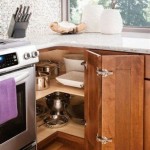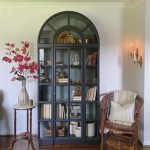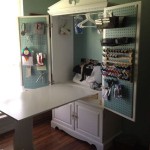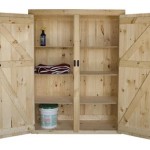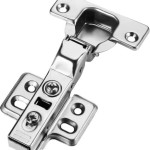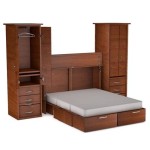Antique Two Drawer File Cabinet: A Timeless Piece of Functional History
The antique two-drawer file cabinet represents more than just a storage solution. It is a tangible connection to past eras, reflecting evolving office practices and design aesthetics. Its enduring appeal lies in its combination of practicality, craftsmanship, and historical significance. Understanding the various aspects of these cabinets – from their construction and materials to their design variations and collector value – provides a deeper appreciation for their place in history.
These cabinets were instrumental in the organized management of documents and records during periods when paper filing systems were paramount. Their presence indicates a shift towards systematized business practices and an increasing emphasis on record-keeping. Furthermore, the types of woods, hardware, and finishes used are indicative of the periods in which they were manufactured.
Evolution of Design and Functionality
The earliest iterations of two-drawer file cabinets typically emerged during the late 19th and early 20th centuries. These early models often featured simpler construction compared to later designs. The fundamental purpose remained the same: to house letter or legal-sized documents in a vertical, easily accessible manner. However, the specific mechanisms and construction techniques evolved over time to enhance functionality and durability.
Initial designs often emphasized durability and basic functionality. The drawers were generally constructed with simple joinery techniques and featured basic metal hardware. Over time, manufacturers introduced features such as spring-loaded followers (to keep files upright), improved drawer slides for smoother operation, and more robust locking mechanisms to secure sensitive documents. The interior configurations also adapted to accommodate different file sizes and organizational methods.
The exterior aesthetics also underwent a transformation. Early cabinets were often plain and utilitarian, reflecting the prevailing design sensibilities of the time. As design trends shifted, file cabinets became more stylized, incorporating decorative elements such as carved details, ornate hardware, and varied wood finishes. The use of different wood species and the application of veneers also contributed to the aesthetic diversity of these pieces.
The size and dimensions of these cabinets were often dictated by the standard paper sizes of the era. Letter-size files were the most common, leading to cabinets with corresponding drawer dimensions. Legal-size cabinets were also produced, offering a larger capacity for documents. The overall height of the cabinet was typically standardized to allow for convenient access and integration into office environments.
Materials and Construction Techniques
The materials used in the construction of antique two-drawer file cabinets significantly impact their durability, appearance, and value. Hardwoods like oak, mahogany, and walnut were commonly employed due to their strength, stability, and aesthetic qualities. Softwoods, such as pine, were sometimes used for internal components or less visible areas.
Oak was a particularly popular choice, known for its durability and distinctive grain pattern. Quarter-sawn oak, a specific cut of oak that reveals a unique medullary ray pattern, was often favored for its visual appeal and superior stability. Mahogany, prized for its rich color and fine grain, was often used in higher-end cabinets to convey a sense of luxury and sophistication. Walnut, with its warm tones and smooth texture, was another desirable choice for its refined appearance.
Construction techniques varied depending on the manufacturer and the era. Dovetail joints, known for their strength and interlocking design, were commonly used to join the sides, front, and back of the drawers. Mortise and tenon joints, another robust construction method, were often used to connect the cabinet frame components. These traditional joinery methods contributed to the longevity and structural integrity of the cabinets.
The hardware used on these cabinets also provides insights into their age and origin. Brass pulls, knobs, and escutcheons were common, often featuring intricate designs and varying finishes. The quality and style of the hardware can serve as clues to the cabinet's manufacturer and its intended market. Locking mechanisms, ranging from simple key locks to more complex combination locks, were incorporated to secure confidential documents.
The finishing techniques applied to the cabinets also contributed to their overall aesthetic. Varnishes, lacquers, and shellacs were used to protect the wood and enhance its natural beauty. The finishes often aged gracefully over time, developing a patina that added character and depth to the wood surface. The presence of original finishes can be a valuable indicator of the cabinet's authenticity and historical significance.
Identifying and Assessing Antique File Cabinets
Identifying and assessing antique two-drawer file cabinets requires a keen eye and a basic understanding of design and manufacturing trends. Several factors contribute to the value and desirability of these pieces, including the age, condition, materials, construction quality, and rarity.
Determining the age of a file cabinet can be achieved through several methods. Examining the design features, such as the style of the hardware, the type of wood used, and the overall aesthetic, can provide clues to its era. Comparing the cabinet to documented examples and catalog images from specific periods can also help establish its age. Manufacturers' marks or labels, if present, can provide definitive information about the cabinet's origin and production date.
The condition of the cabinet is a crucial factor in its value. Scratches, dents, watermarks, and other signs of wear and tear can detract from its appearance and reduce its value. However, a certain degree of wear is often considered acceptable and can even add to the cabinet's character. Major structural damage, such as broken joints or warped panels, can significantly diminish its value and require professional restoration.
The materials and construction quality are also essential considerations. Cabinets constructed from high-quality hardwoods and featuring robust joinery techniques are generally more valuable than those made from less durable materials or employing simpler construction methods. The presence of original hardware and finishes can also enhance the cabinet's value and authenticity.
Rarity plays a significant role in determining the value of antique file cabinets. Certain models, particularly those produced in limited quantities or featuring unique design elements, are highly sought after by collectors. Cabinets with documented provenance, such as those that belonged to prominent individuals or institutions, can also command a premium price. Ultimately, the value of an antique two-drawer file cabinet is determined by a combination of these factors and the current market demand.
Restoring antique two-drawer file cabinets is a specialized process that requires a delicate balance between preserving the original character of the piece and addressing any structural or cosmetic issues. Cleaning, repairing damaged components, and refinishing the wood are common restoration tasks. It is important to use appropriate materials and techniques to avoid damaging the cabinet or diminishing its historical value. Professional restoration services can ensure that the cabinet is restored to its former glory while preserving its authenticity.

Vintage 2 Drawer File Cabinet In Quartersawn Oak

Vintage Barrister 2 Drawer File Cabinet

Vintage 2 Drawer File Cabinet In Quartersawn Oak

Knob Hill 2 Drawer Wood File Cabinet In Antique Cherry

Ponderosa 2 Drawer Filing Cabinet

Oak 2 Drawer File Cabinet Redlands Antique Auction

Legacy 2 Drawer File Cabinet Brown Walnut

Vintage Two Drawer Oak Locking Filing Cabinet Chairish

15 Letter Size 2 Drawer Vintage Steel Vertical File Cabinet

Signature Mission 2 Drawer File Cabinet

